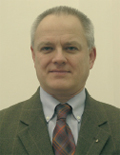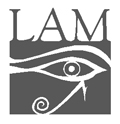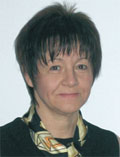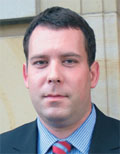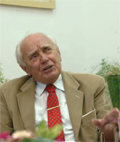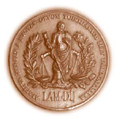The eLitMed.hu medical portal uses computer cookies for convenient operation. Detailed information can be found in the Cookie-policy.
Lege Artis Medicinae - 2008;18(01)
Content
[PAIN AND PAIN CONTROL IN RHEUMATOLOGY]
[In developed industrial countries the overall population prevalence of chronic rheumatic pain is around 35%. A classification that is useful in everyday practice is based on the origin of musculoskeletal pain and lists pain associated with degenerative joint diseases, pain related to metabolic bone diseases, non-articular and soft tissue rheumatism, and pain due to inflammation. In chronic pain syndrome pain itself has lost its adaptive biological role, and presents as a pathogenetic factor in its own right, accompanied by significant vegetative and psychological symptoms. Therapeutic exercise is of basic importance in the management of rheumatic pain. It is supplemented by various pharmacologic and nonpharmacologic methods. The latter include, among others, fomentations, packs, balneo- and hydrotherapeutic methods, electro-, mechanoand thermotherapeutic approaches. Pharmacological therapy usually means the use of simple analgesics, non-steroidal antiinflammatory drugs, steroids, minor opiates, and, lately, also major opiates, which may be supplemented by adjuvant agents such as tricyclic antidepressants and anticonvulsive drugs. When indicating the most often used non-steroidal antiinflammatory drugs, their potential side effects should carefully be considered. Invasive pain-killing methods on the border area between anaesthesiology and rheumatology (epidural steroid administration, ganglionic blockade, intravenous regional blockade) are applied in cases that do not respond to conventional therapy, and sometimes also as successful first-line intervention.]
[MOLECULARLY TARGETED BIOLOGICAL THERAPY IN THE TREATMENT OF SOLID TUMOURS]
[In part one of this article we reviewed the modern biological oncotherapy of breast cancer and colorectal cancer. Now we report on the biological therapies that target various kinase inhibitor pathways by monoclonal antibodies or by oral kinase inhibitors in gastrointestinal stromal tumours, pancreatic cancer, head and neck cancer, lung cancer and kidney cancer. Cell surface receptors (e.g., epidermal growth factor receptor in head and neck cancer) and ligands necessary for the growth of metastases (e.g., vascular endothelial growth factor in kidney cancer) can be blocked by specifically developed monoclonal antibodies. Small molecular weight oral kinase inhibitors, e.g., imatinib and sunitinib in gastrointestinal stromal tumour, erlotinib in pancreatic cancer, erlotinib and gefitinib in lung cancer, sunitinib and sorafenib in kidney cancer, sorafenib in hepatocellular cancer block intracellular signal transduction pathways. The mTOR inhibitor temsirolimus can be used in advanced renal cell carcinoma.]
[TISSUE HORMONAL SHOCK: INTRACRINOLOGY - THE IMPORTANCE OF LOCALLY PRODUCED HORMONES IN THE PATHOGENESIS OF VARIOUS DISEASES]
[This review describes the function and tissuespecific expression of the 11- and 17-beta-hydroxysteroid- dehydrogenase enzyme families as well as the aromatase and 1-alpha-hydroxylase enzymes. Recently, in situ formation of active steroids by these enzymes at the sites of their actions from biologically inactive precursors in the circulation have been demonstrated to play an important role in sex steroid-dependent neoplasms (such as breast and prostate cancer), and in some metabolic diseases (such as obesity, osteoporosis and insulin resistance). Tissuespecific Cushing syndrome (local hypercortisolism) may contribute to the pathogenesis of the latter group of diseases, suggesting that obesity may be considered the Cushing-syndrome of the omentum and that osteoporosis is the obesity of bone. Intracrinology is the science of alterations in tissue hormone synthesis catalysed by enzymes such as those mentioned above, which cannot be detected by measuring circulating hormone levels. The effects of local hormone production differ from those of the well-described autocrine, paracrine and endocrine actions. Based on the hormonal changes within various tissues, the pathogenesis of a number of diseases may be interpreted in a novel way.]
[THE EPIDEMIOLOGY OF CEREBROVASCULAR DISEASES IN HUNGARY AFTER THE MILLENNIUM]
[INTRODUCTION - Here we present the descriptive epidemiology of stroke in Hungary including mortality, morbidity, functional limitation and inpatient care based on the most recent health statistical data. METHODS - Mortality data were analysed by direct and indirect standardisation, and geographical mapping based on empirical Bayesian smoothing. Morbidity data were obtained from the General Practitioners’ Morbidity Sentinel Station Program and the National Health Surveys. The latter also provided data on functional limitation. Data on inpatient service were taken from the European Hospital Morbidity Database of WHO. RESULTS - Hungarian stroke mortality continued to decrease in recent years, and the slope of the decrease was larger than in Western Europe. Stroke mortality was highest in the Northern- Hungarian Region, and in Somogy and Zala counties. The incidence of stroke was 1.5-2 times higher than in the developed countries in most age groups. Over 64 years of age, a decline of stroke incidence was observed, especially in men. In this age group approximately 10% of men and 7% of women had already had a stroke. Of these patients more than 10% needed assistance to get out of the bed, dress up, or eat. Hospitals reported more than 60 000 stroke cases in 2005. CONCLUSION - Despite the promising trends in stroke mortality and now also in morbidity, both indices are still rather high in Hungary compared to those in Western-Europe. The relatively favourable epidemiological changes, however, may be overridden by the increased stroke burden resulting from the aging of the population.]
[“WHAT DO YOU THINK HAPPENS TO THOSE WHO RARELY GO OUTDOORS?”]
[INTRODUCTION - The surrounding environment plays an important role in the development of psychosomatic symptoms. This study examines what children think of the consequences of not going outdoors for long periods. METHODS - Data were collected using the “draw-and-write” technique that besides the written answers allows children to express their thoughts in drawings. The questionnaire contained open-ended questions both on sociodemographic data and on the children’s notion of the relationship between environment and health or illness. Questionnaire submission was voluntary and anonymous. The study subjects were 9 to 11-year-old pupils (n=448, 44.6% boys, 55.4% girls) from six primary schools, two in Budapest, and one each in Pest, Jász-Nagykun-Szolnok, Csongrád and Békés counties. The primary schools were selected so as to represent various environmental locations, such as urban, town, suburban residential, area of blocks of flats. RESULTS - We found that all children agreed in that those who don't go outdoors for a long time will, in one way or another, get sick. Illnesses mentioned in the answers were classified in two categories, physical and mental. Physical health problems were further divided into four subcategories: symptoms (e.g., anaemia, pallor, fever, weak joints or bones); diseases; obesity; death. Mental health problems were divided into two subcategories: actual psychiatric diseases (e.g., depression) and symptoms, such as unhappiness, sadness, anger. CONCLUSIONS - We conclude that children in this study sample reckon the close connection between staying indoors for prolonged periods and the development of symptoms and disease.]
1.
Clinical Neuroscience
Is there any difference in mortality rates of atrial fibrillation detected before or after ischemic stroke?2.
Clinical Neuroscience
Factors influencing the level of stigma in Parkinson’s disease in western Turkey3.
Clinical Neuroscience
Neuropathic pain and mood disorders in earthquake survivors with peripheral nerve injuries4.
Journal of Nursing Theory and Practice
[Correlations of Sarcopenia, Frailty, Falls and Social Isolation – A Literature Review in the Light of Swedish Statistics]5.
Clinical Neuroscience
[Comparison of pain intensity measurements among patients with low-back pain]1.
Clinical Neuroscience Proceedings
[A Magyar Stroke Társaság XVIII. Kongresszusa és a Magyar Neuroszonológiai Társaság XV. Konferenciája. Absztraktfüzet]2.
3.
Journal of Nursing Theory and Practice
[A selection of the entries submitted to the literary contest "Honorable mission: the joys and challenges of our profession" ]4.
Journal of Nursing Theory and Practice
[End of Life and Palliative Care of Newborns in the Nursing Context]5.
Journal of Nursing Theory and Practice
[Aspects of Occupational Health Nursing for Incurable Patients ]